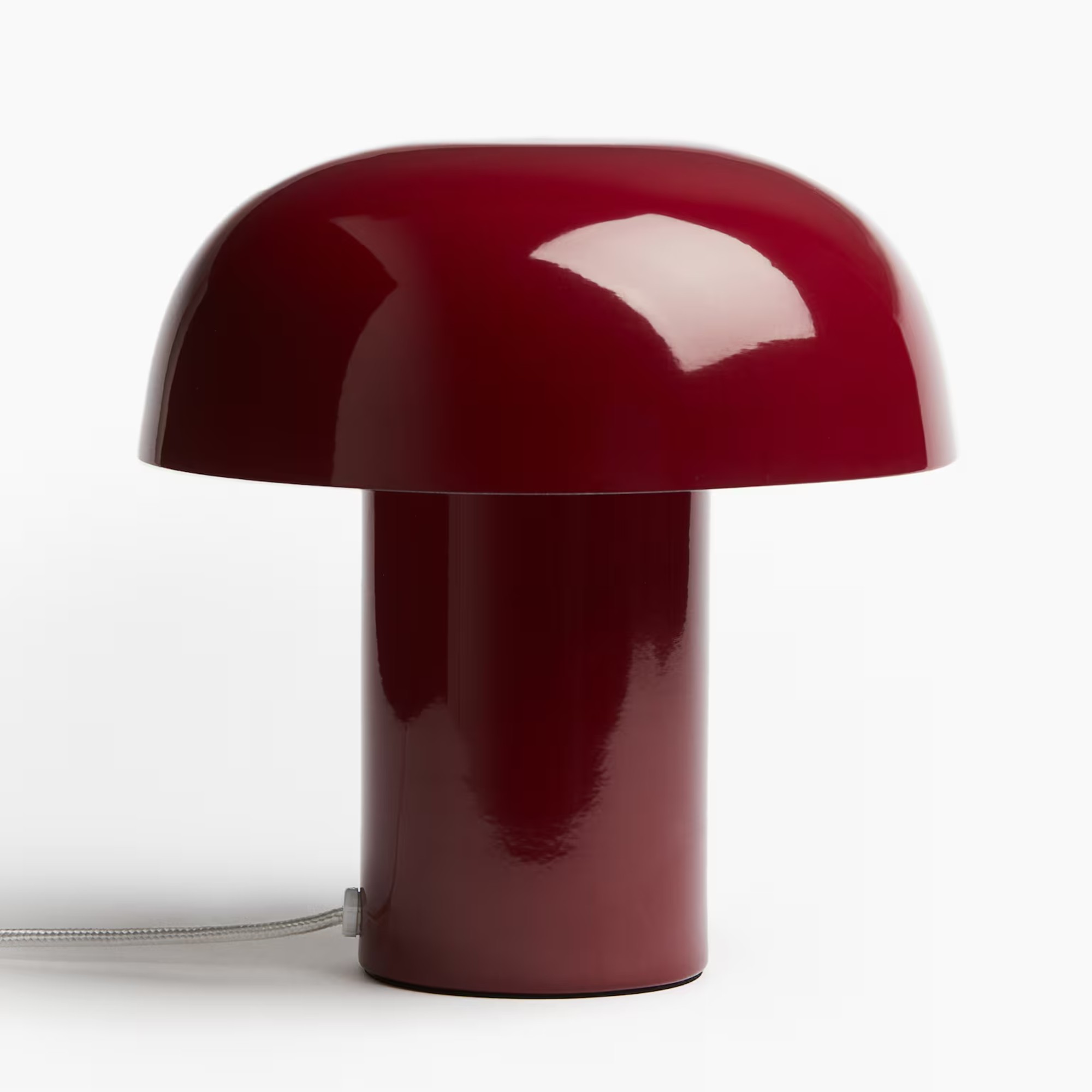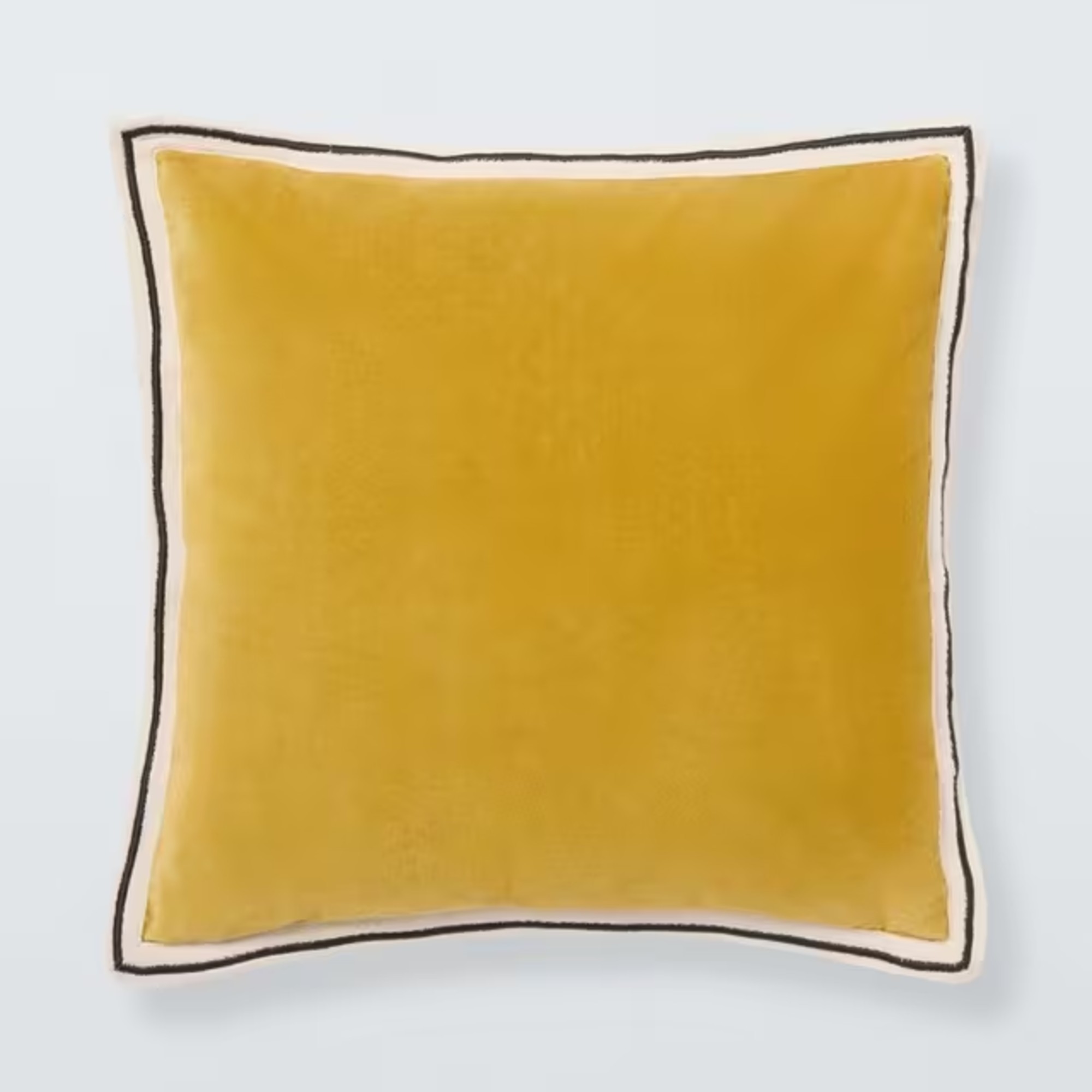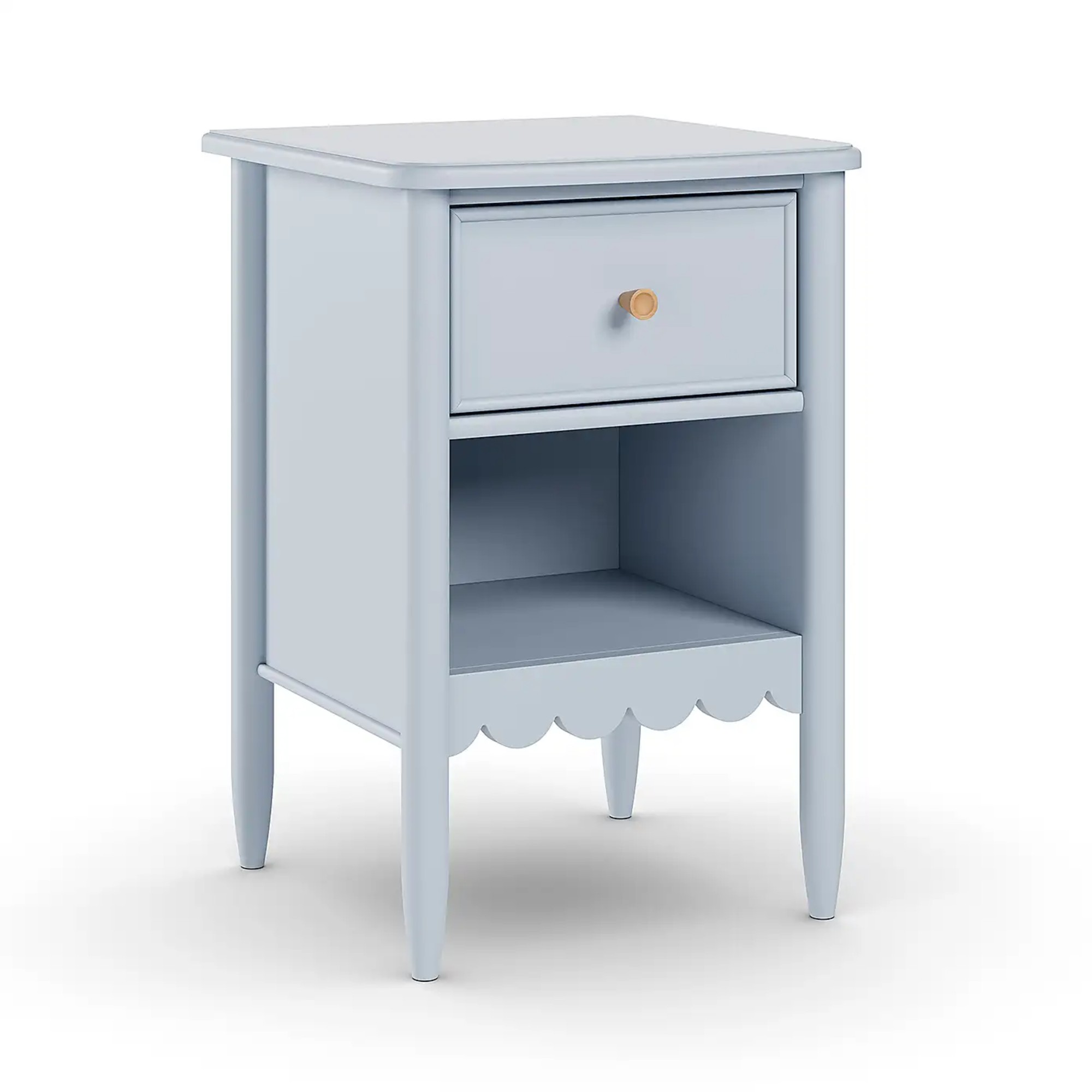Accent colour ideas – 12 ways to uplift any room in your home with a pop of the right colour
Colour experts reveal the best shades to instantly bring any room in your home to life
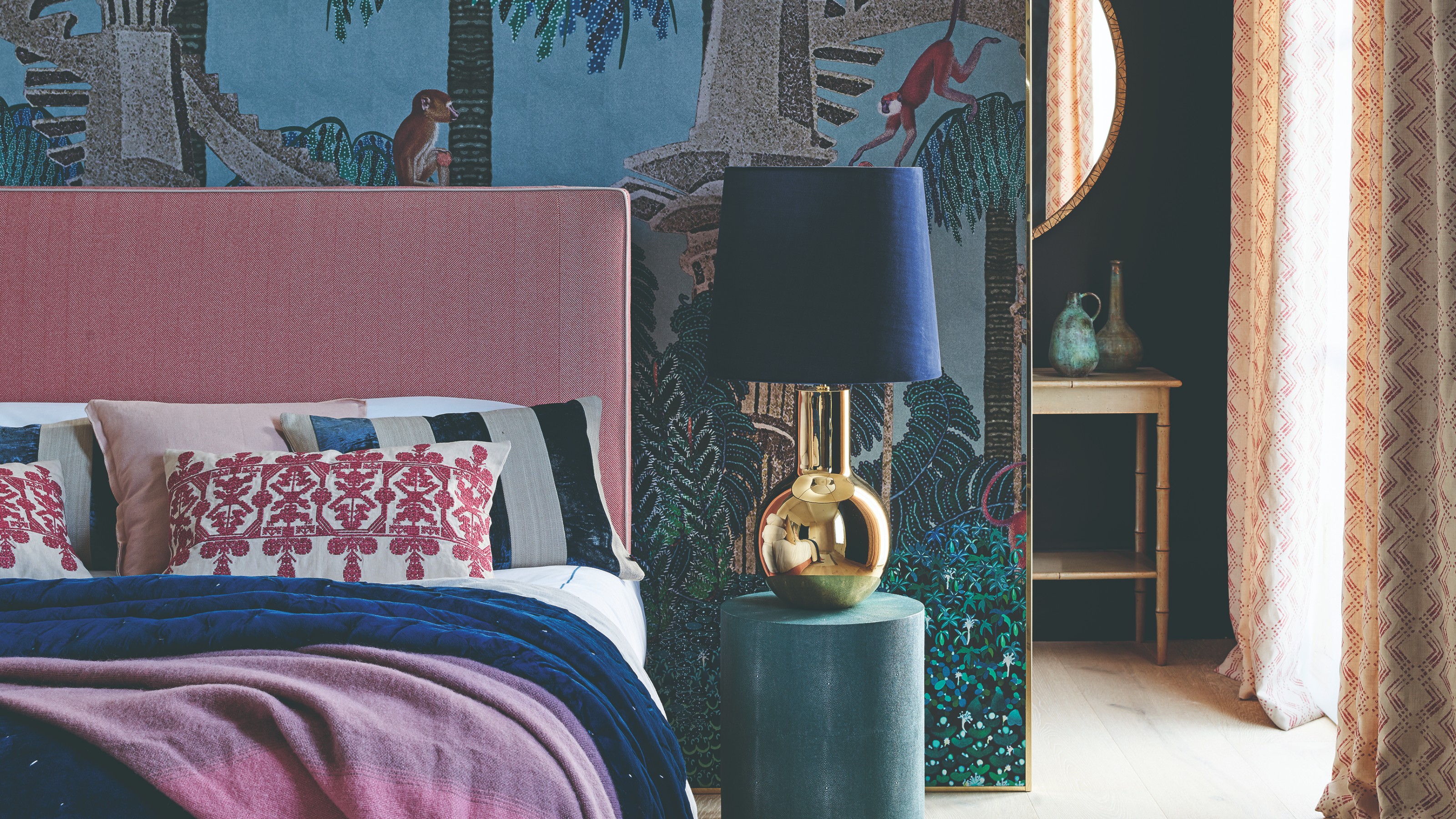
- 1. Go for primary colours
- 2. Make it the colour you like the most
- 3. Use soft blue or pink with intention
- 4. Pair vibrant green with baby blue
- 5. Give your space a lift with sunshine yellow
- 6. Pick a soothing aubergine
- 7. Use a bright teal in a red study
- 8. Complement a calming scheme with mint green
- 9. Lift a neutral kitchen with zesty orange
- 10. Opt for two accents
- 11. Prettify with ice cream pink
- 12. Create a cosy feel with cobalt blue
- FAQs

Sara Hesikova
If you’re currently in the middle of choosing a colour scheme for a room in your home then you may have come across the term ‘accent colour’. Essentially, your accent colour will be the ‘pop of colour’ that will bring the space to life – but choosing the right accent colour ideas for your room’s scheme might be a bit daunting at first.
Whether you’re after some paint ideas or ways to accessorise the room in question, this is where the idea of an accent colour comes into play – along with the universal 60-30-10 rule which colour experts advise to stick to when creating a colour scheme and employing an accent colour.
‘An accent colour is a supplementary colour used to draw attention to a specific feature, object, or area within a room,’ says Helen Shaw, international director of marketing at Benjamin Moore. ‘It is a powerful tool to break up an ultra-contrasting scheme, allowing the look to feel cohesive and polished. When it comes to selecting which colours will form the base of your scheme and which will be the accents we recommend thinking about splitting the room into ratios. The main colour should be 60% of the scheme, 30% the secondary and 10% an accent.’
Accent colour ideas
Choosing the right accent colour for your space will, of course, largely depend on the overall colour scheme you’re going from – especially what the main colour of the room will be. But you can also work backwards and in fact start off with your accent colour and then choose your main and secondary shades using the colour wheel. Even if you choose to go about it this way though, the 60-30-10 rule needs to be respected.
‘I always apply the 60-30-10 rule,’ says Tash Bradley, Lick’s director of interior design and colour psychologist. ‘So 60% being your dominant colour – that tends to be the walls and maybe looking at the floor as well and that is normally a sort of desaturated lighter or dark - but not too stimulating - colour. Then you have your 30% colour – that's normally your sofa, the bed or kitchen cabinets which tends to be a little bit brighter. And then you have your 10% at the end which is your accent colour. This is the colour that has the vavavoom. It's got personality, a vibrancy to it. It lifts the space.’
That’s what choosing the right shade for your accent colour can do. But going for the wrong one can also take it in the exact opposite direction – which is exactly why you should pick it carefully.
1. Go for primary colours
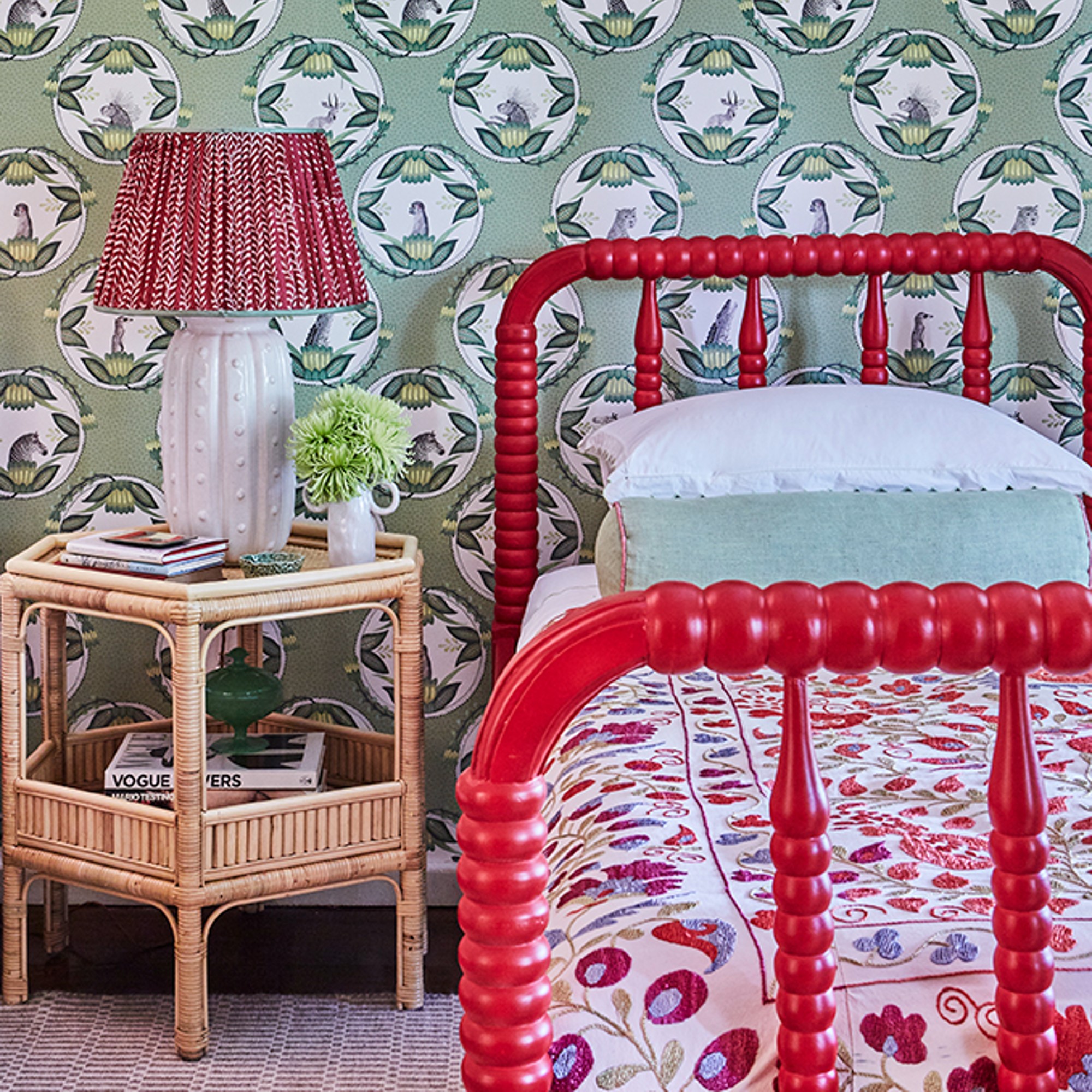
Primary colours - which are red, yellow and blue - are among the most recommended accent colours as they provide the much needed statement and saturation. The unexpected red theory, a decorating method which went viral last year, is the perfect example of this.
Get the Ideal Home Newsletter
Sign up to our newsletter for style and decor inspiration, house makeovers, project advice and more.
‘I always think primary colours make the best accents, your reds, blues and yellows. They are almost at their purest form. They bring the energy you need. They possess the stimulation. They make you smile. They bring that personality to a room,’ Tash at Lick explains.
2. Make it the colour you like the most
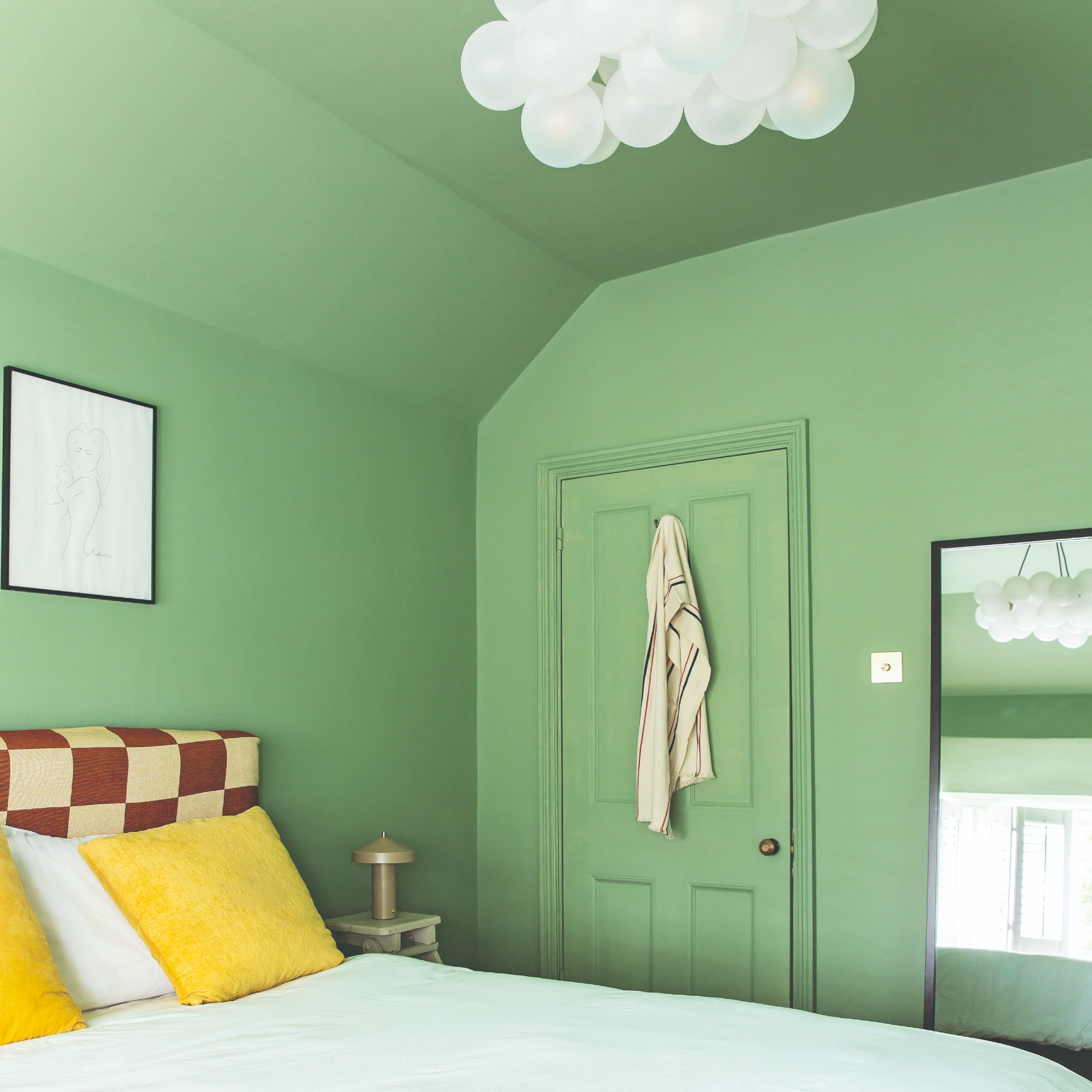
The accent colour is the shade that will draw the most attention in a room – so it’s best to go with a colour that you truly love and that expresses your personality and style, no matter what it is.
‘I always say to my clients when we're doing a consultation to work out what the colour that they are most drawn to is. And that needs to be the colour that we weave in throughout the whole house. It's called a colour story or the red thread. Sometimes people have fallen in love with a really bright colour but we can use that bright colour as an accent tone in all the different rooms. So it could be in your tiles, bedding or the sofa. I always think it's the accent colour that needs to reflect your personality – and that's where I'd always guide you. Because it's always something fun that you want to draw attention to. It's normally the brightest colour so your eye gravitates towards it,’ Tash at Lick explains.
3. Use soft blue or pink with intention
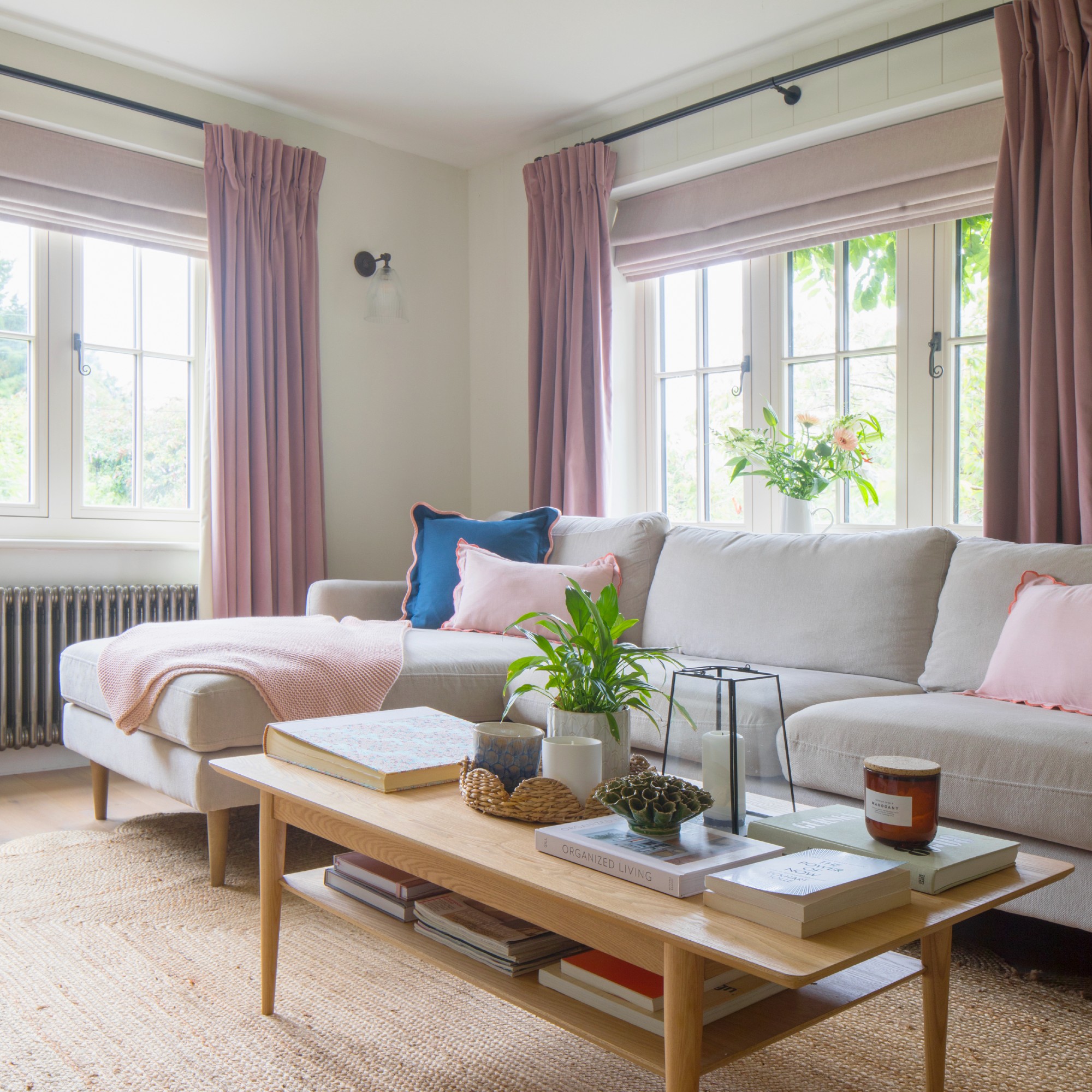
But having said that, your accent colour doesn’t necessarily have to be the brightest of shades. Just as long as it stands out and contrasts - in a complementing way - your main and secondary shades. Powder pink and baby blue are the perfect example of this.
‘Softer tones like a powder blue or blush can still be powerful when used with intention,’ says Jen Devaney, Frenchic Paint’s colour consultant. ‘The key is contrast and emotion. Good accent colours wake something up in you. They carry a quiet but confident energy.’
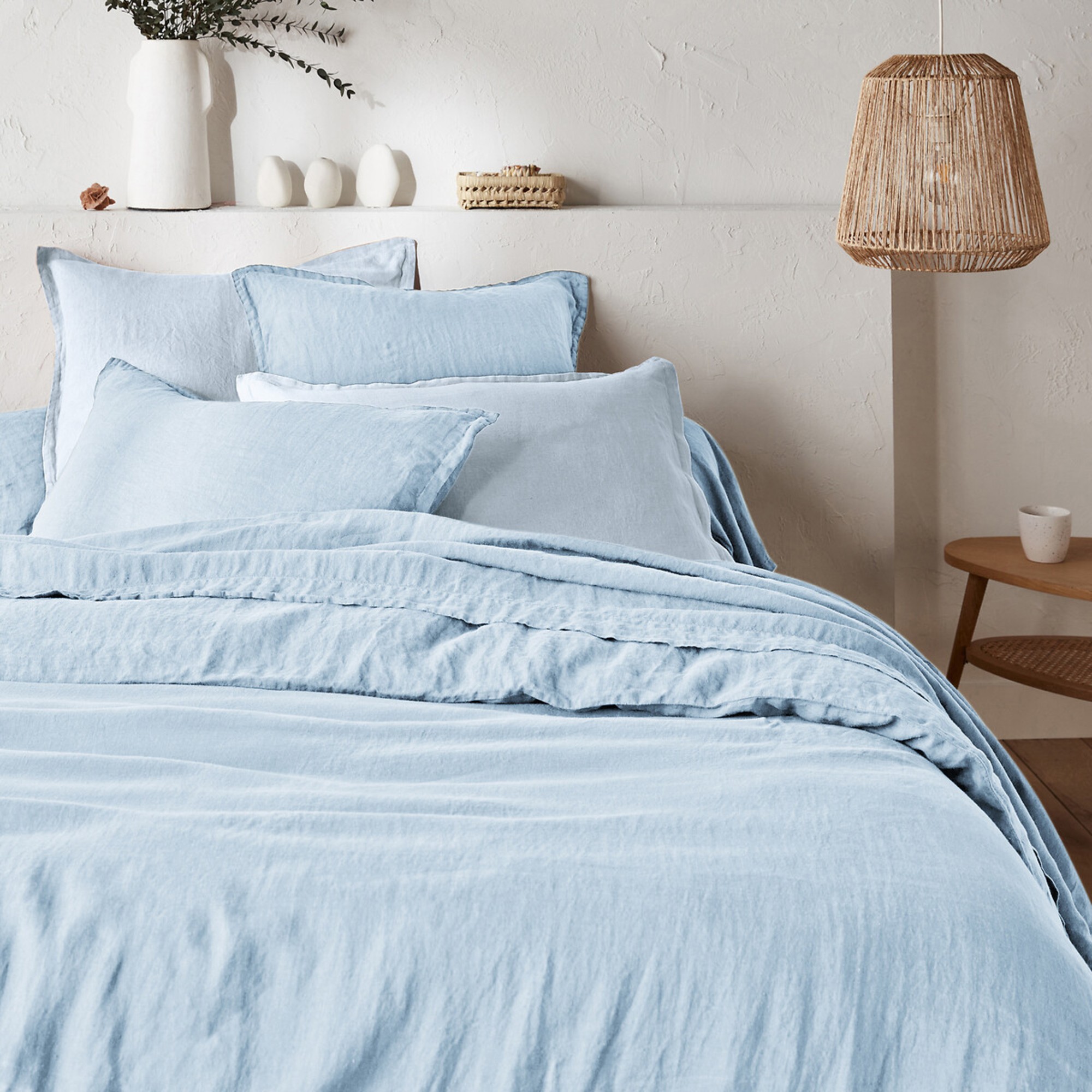
This La Redoute linen bedding set is the Ideal Home team's go-to for the warmer spring and summer months. It is on the pricier side but the brand does regular sales so we recommend keeping your eyes peeled for those.
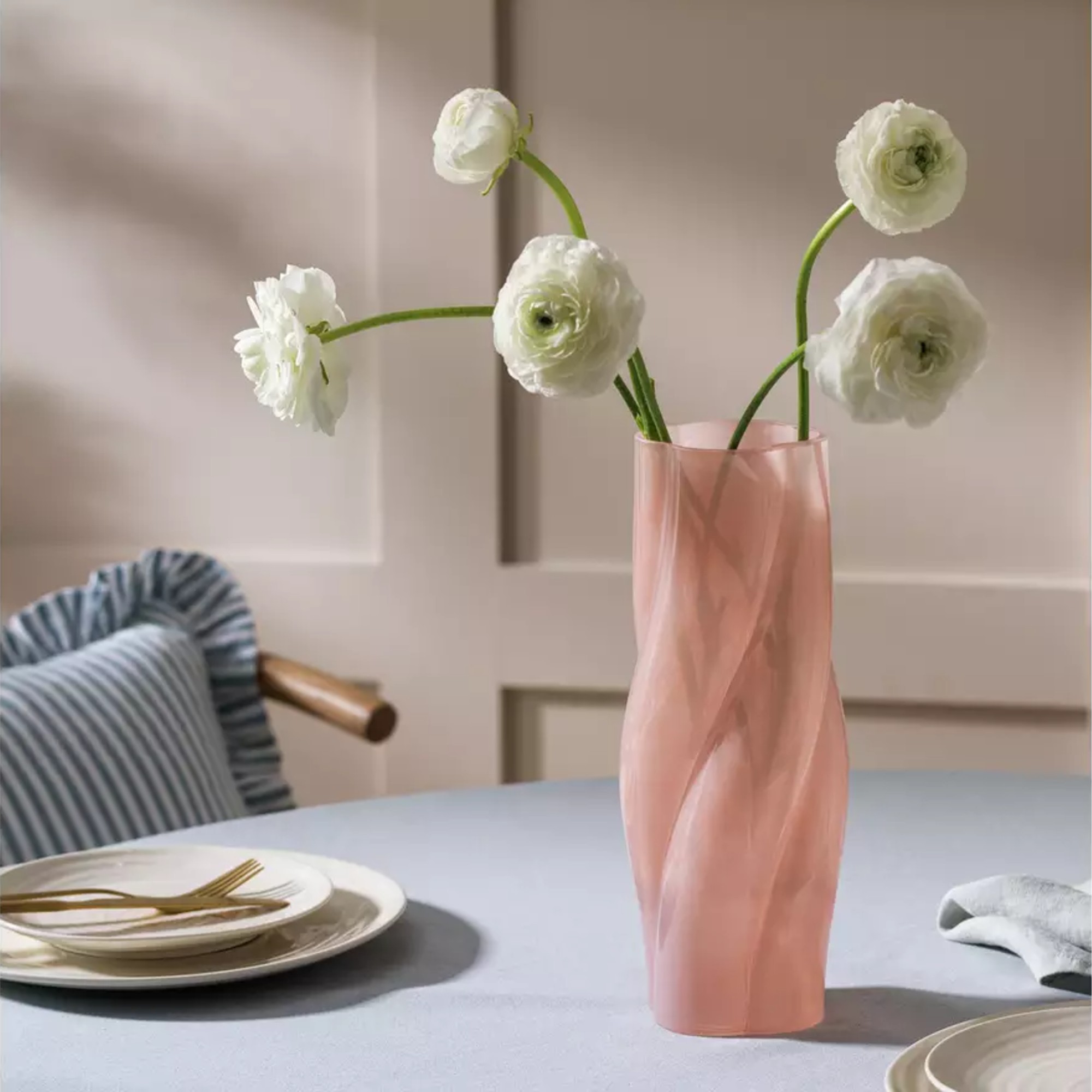
You can bring your accent colour into your space even through the smallest of details like a flower vase - this liquorice-inspired, twisted vase from Habitat is the perfect example. You can mirror this shade even just in one or two more pieces in the room and you're good.
4. Pair vibrant green with baby blue
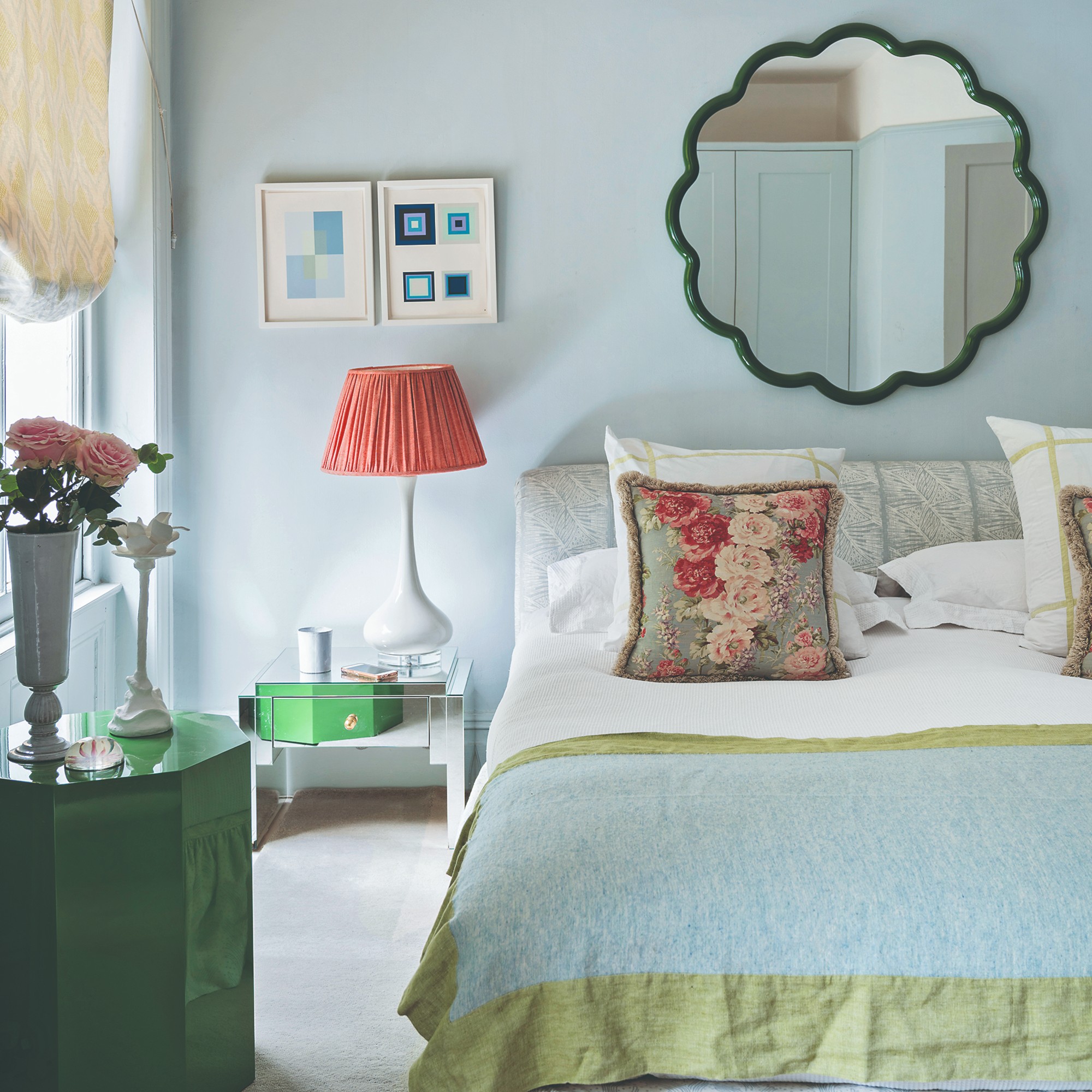
If, however, soft blue is your main colour in a bedroom or living room colour scheme - which is something we wouldn’t be surprised by as baby blues are this year’s colour and paint trend - one of the best accent colours to pair with it according to the colour wheel is green. And Helen at Benjamin Moore prefers a vibrant green in this scenario.
‘Cool and calming, blue is the perfect foundation for a room’s colour scheme and works especially well with its neighbour on the colour wheel: green when this is selected as the accent colour. Rich and dramatic, or pale and interesting, you can look at all variants of these shades. A personal favourite is a pale blue reminiscent of the sky paired with a brighter green accent. The vividness of the green can help to break up the soft blue creating a refreshing, airy feel similar to that seen outdoors,’ she says.
5. Give your space a lift with sunshine yellow
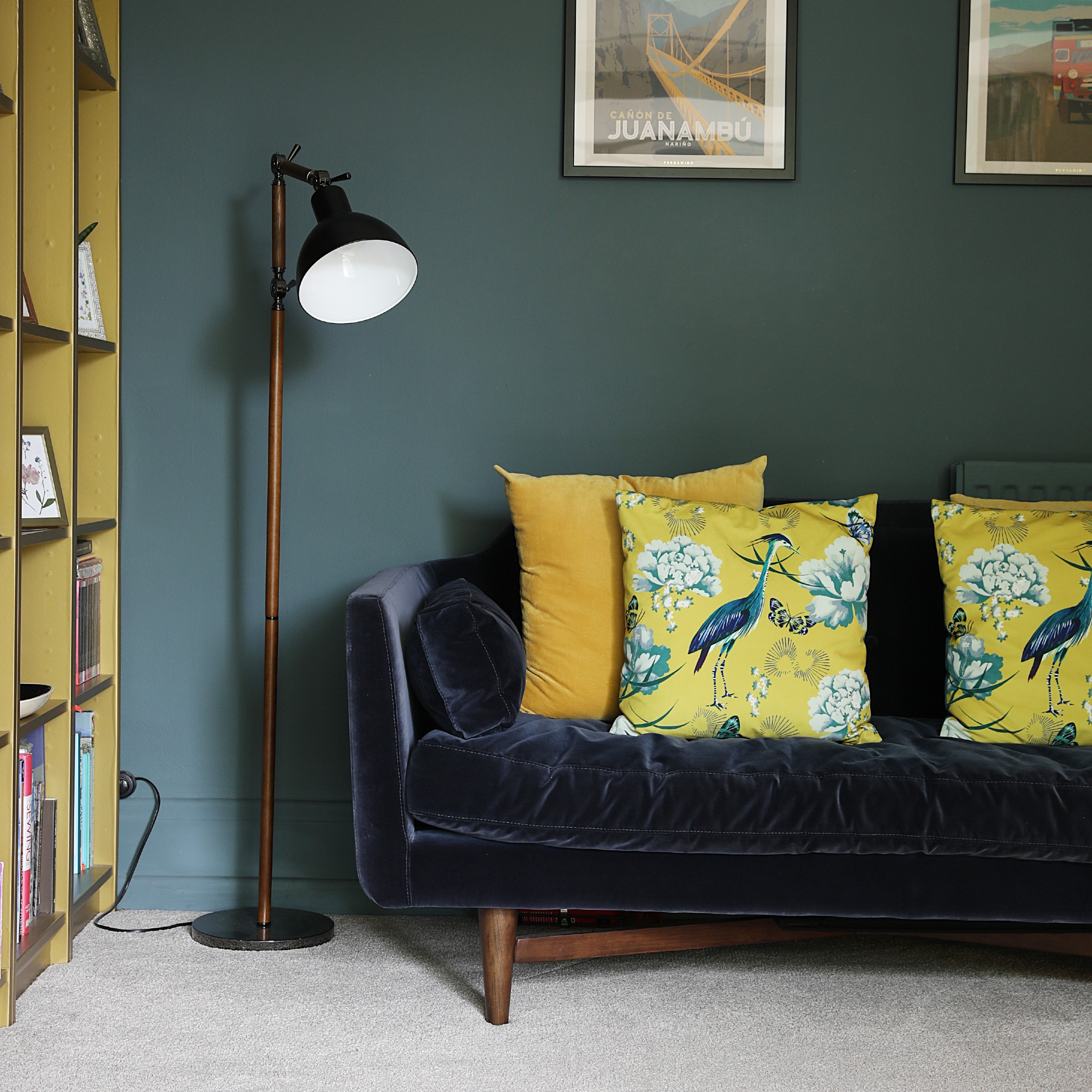
Yellow is a particularly good choice for a north facing space as it can warm up a 'cool' room.
'Blue and yellow are located opposite each other on the colour wheel and hence adding yellow soft furnishings to a mainly blue living room, really creates a vibrant contrast and enlivens the space,' says Debbie Leigh, design manager at ILIV.
If the thought of a large element of yellow is daunting then consider small pieces first, 'Accent colours can be incorporated using smaller items such as cushions and decorative accessories or consider an upholstered piece of furniture or a statement set of curtains for a real wow factor,' adds Debbie.
6. Pick a soothing aubergine
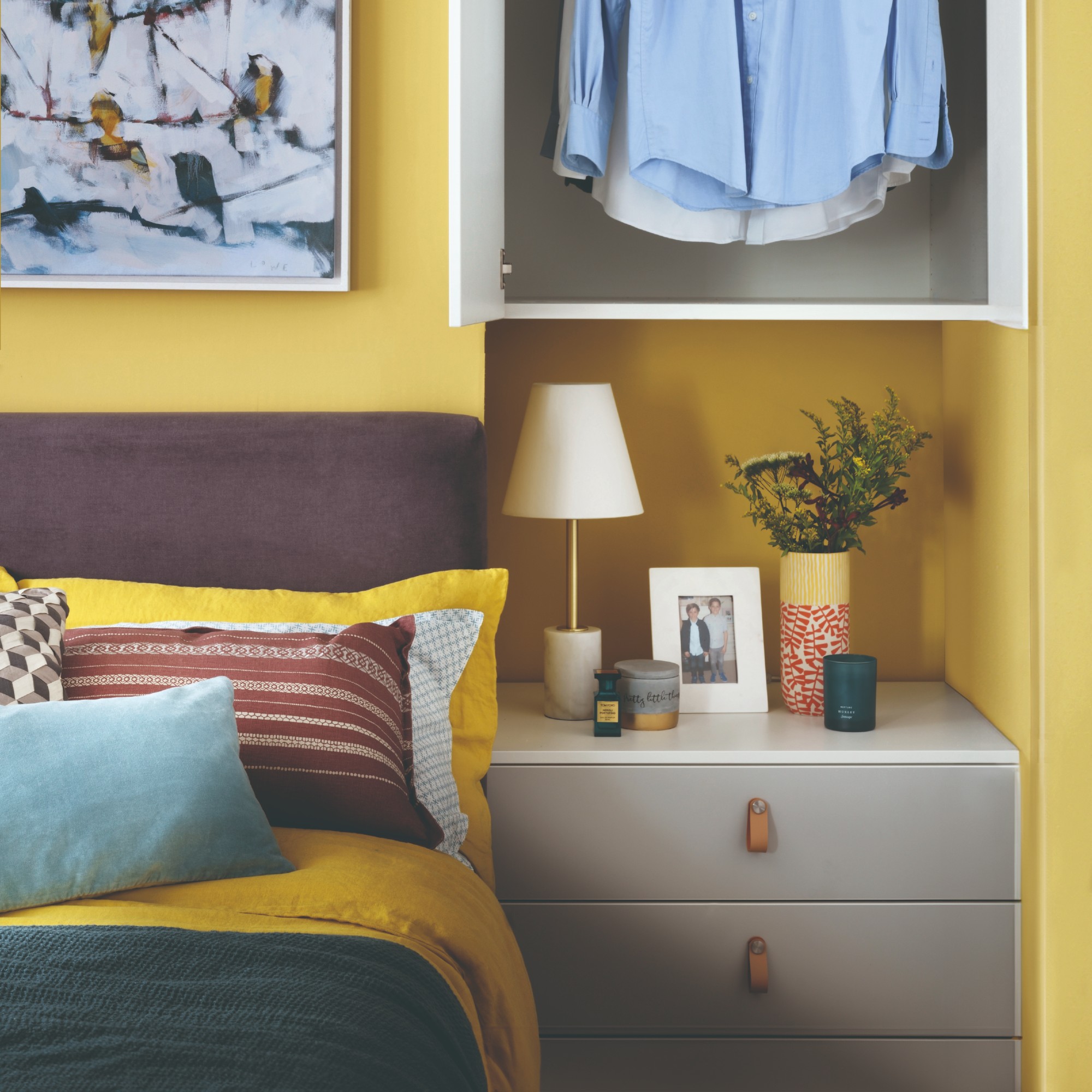
Colour schemes can be hard to choose, start with a subtle shade that could really benefit from an accent colour to enhances it. Aubergine goes really well as an accent colour, if you're painting it on cabinets then a darker tone will ground the space.
Paint and colour expert, Annie Sloan CBE, says, 'Spice up your serene kitchen with a dash of aubergine on the cabinets! Picture a pale purple paradise, calm and dreamy, then BAM – bold aubergine cabinets adding flair and drama. It's like adding a sprinkle of magic to your space, making it uniquely, boldly, completely you. Plus, since Chalk Paint applies to any surface you can spread the aubergine love with little accents throughout. On flooring, on metal, on wood, on plastic, the only limit is your imagination.
You could also paint your chairs or table top to take your accent shade further.
7. Use a bright teal in a red study
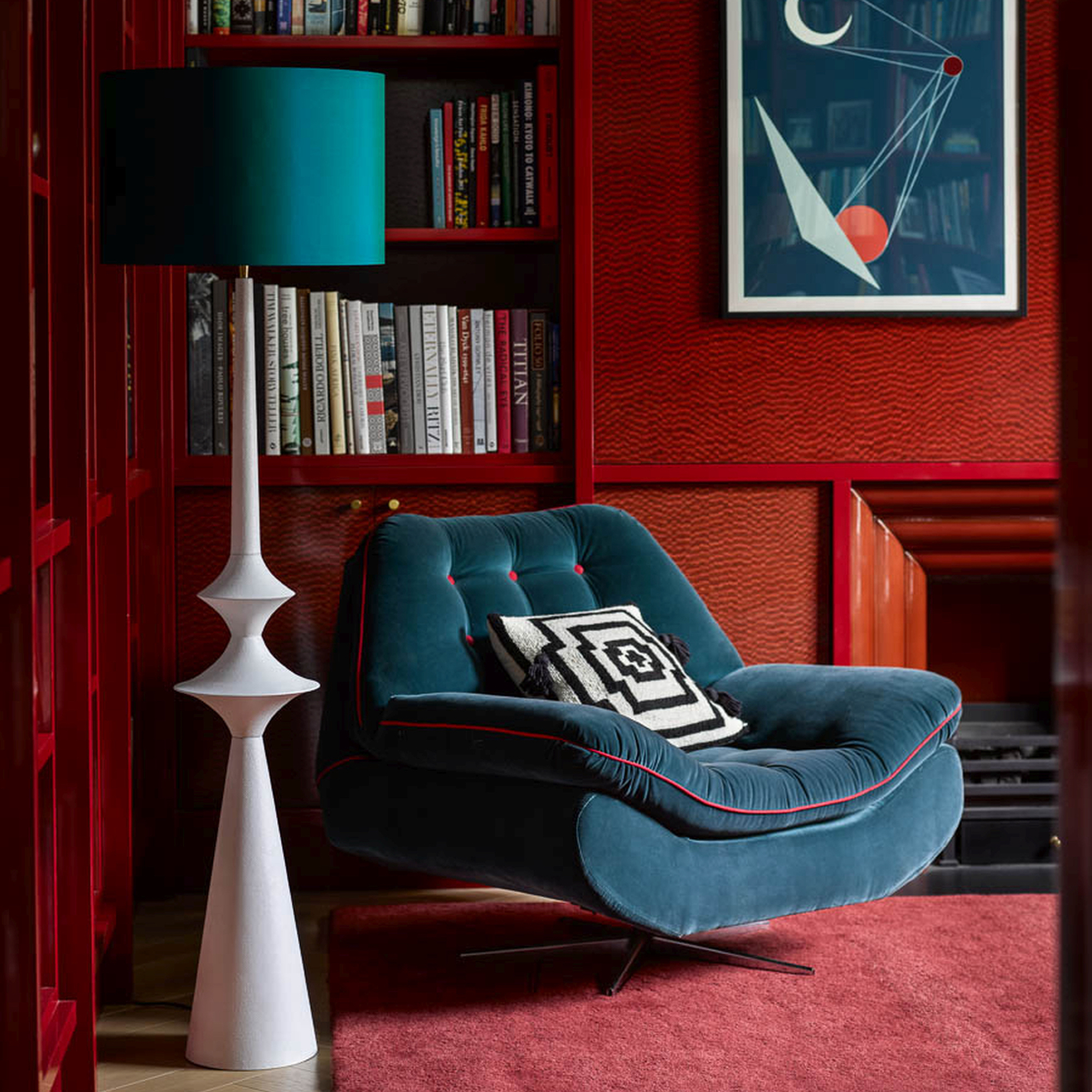
For a punchy primary red living room or snug you'll need to pick an accent colour that adds a fabulous contrast and a style statement to boot. Teal is a great choice, start small and then add another two or three elements.
'Sneaking an accent colour into a room is great fun but can often be a bit of a challenge – which is where table lamps can be your friend,' says Jo Plant, head of design at Pooky.
'With a bit of clever thinking, a well-chosen table lamp and shade can fulfil a double function in your scheme: it can provide one of your three kinds of light (ambient, accent or - if you use it to read by - task lighting), and it can also be a practical way to introduce an accent colour.'
8. Complement a calming scheme with mint green
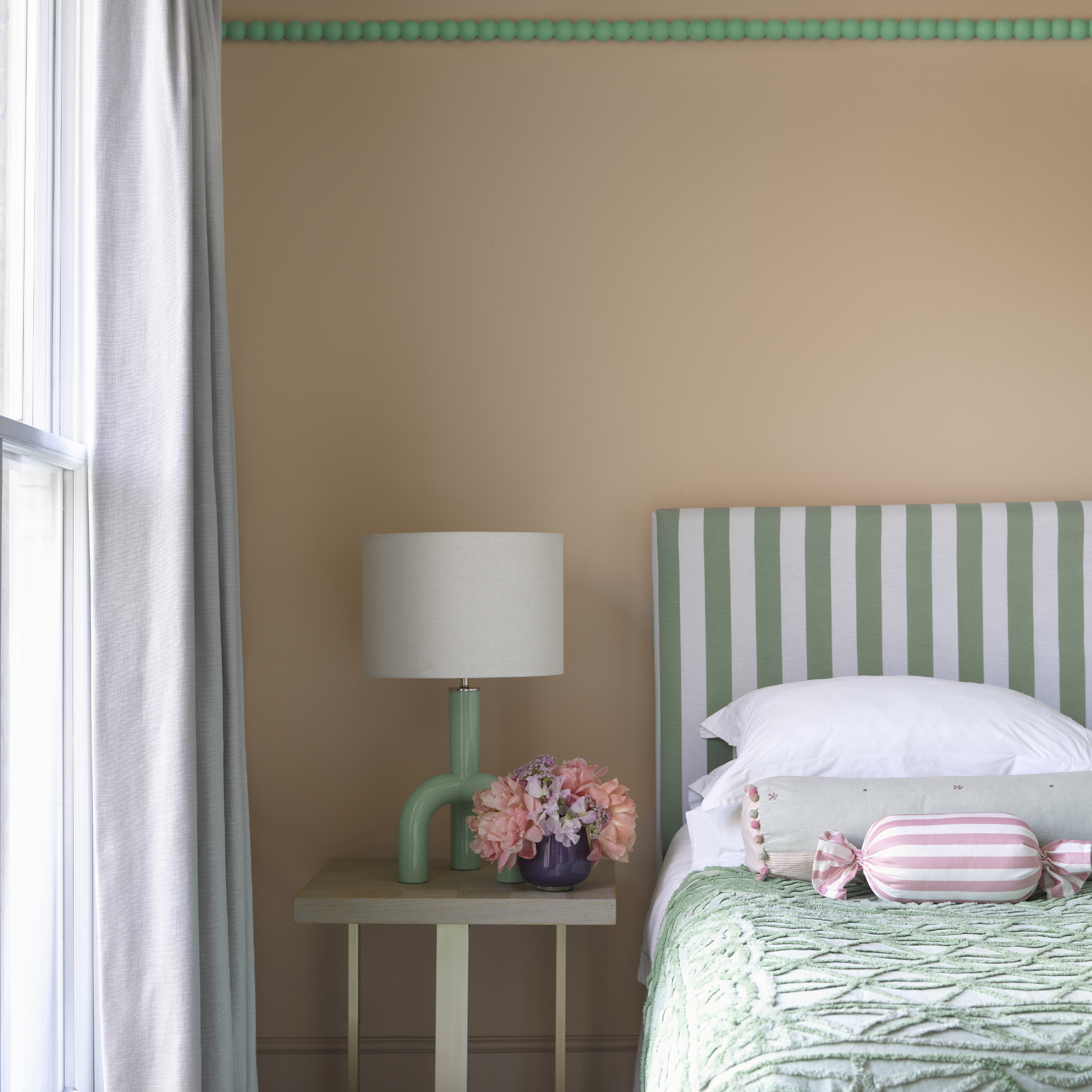
Accent colours can also be set perfectly between light and dark tones and a mint green is a great place to start when your base colour is white, stone, or pink.
'Green is a hugely versatile colour, whether you want to use it as an accent or to take centre stage, there is a shade for everyone. Paint walls in a tranquil pink hue to set a restful mood then inject pops of bright mint green to lift the look to the next level,' Helen at Benjamin Moore says.
Another way to make accent colours boost your scheme is where you place them, for example, if your bedroom ceiling is low, then add a painted picture rail – it will help to draw the eye up. Use the colour in your bedding and accessories too for cohesion.
9. Lift a neutral kitchen with zesty orange
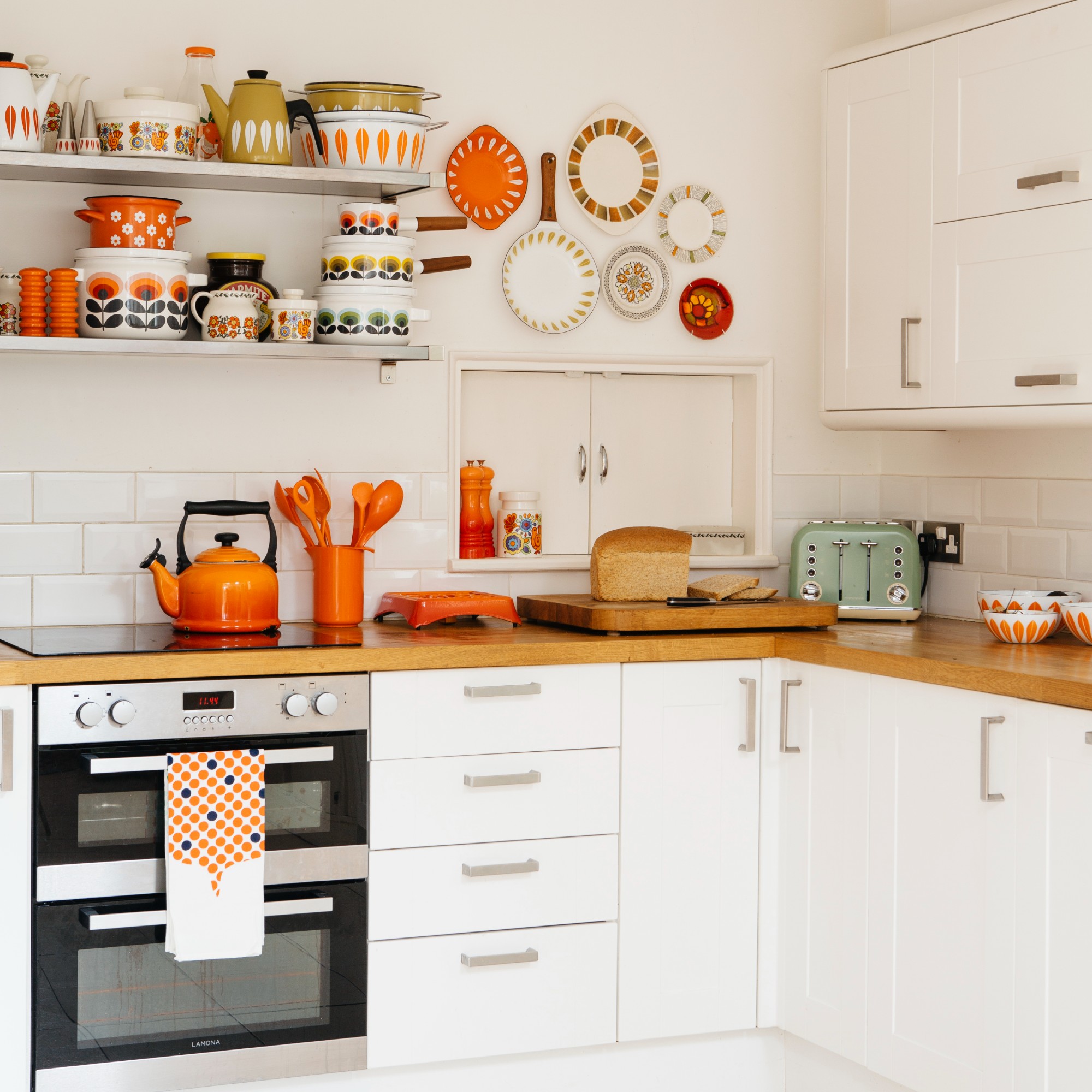
Perk up a tired kitchen with a vibrant orange that will lift your mood and ensure the space feels cheerful and fun.
'Delight your senses by injecting a playful splash of colour to create accents within your scheme. It’s amazing what a difference a pop of colour can make and it could be exactly what your room is missing,' advises Emma Bestley, co-founder of YesColours.
If you're unsure of painting something as key as your cabinets then try the colour out elsewhere instead, or opt for a more muted version of your chosen shade instead.
10. Opt for two accents
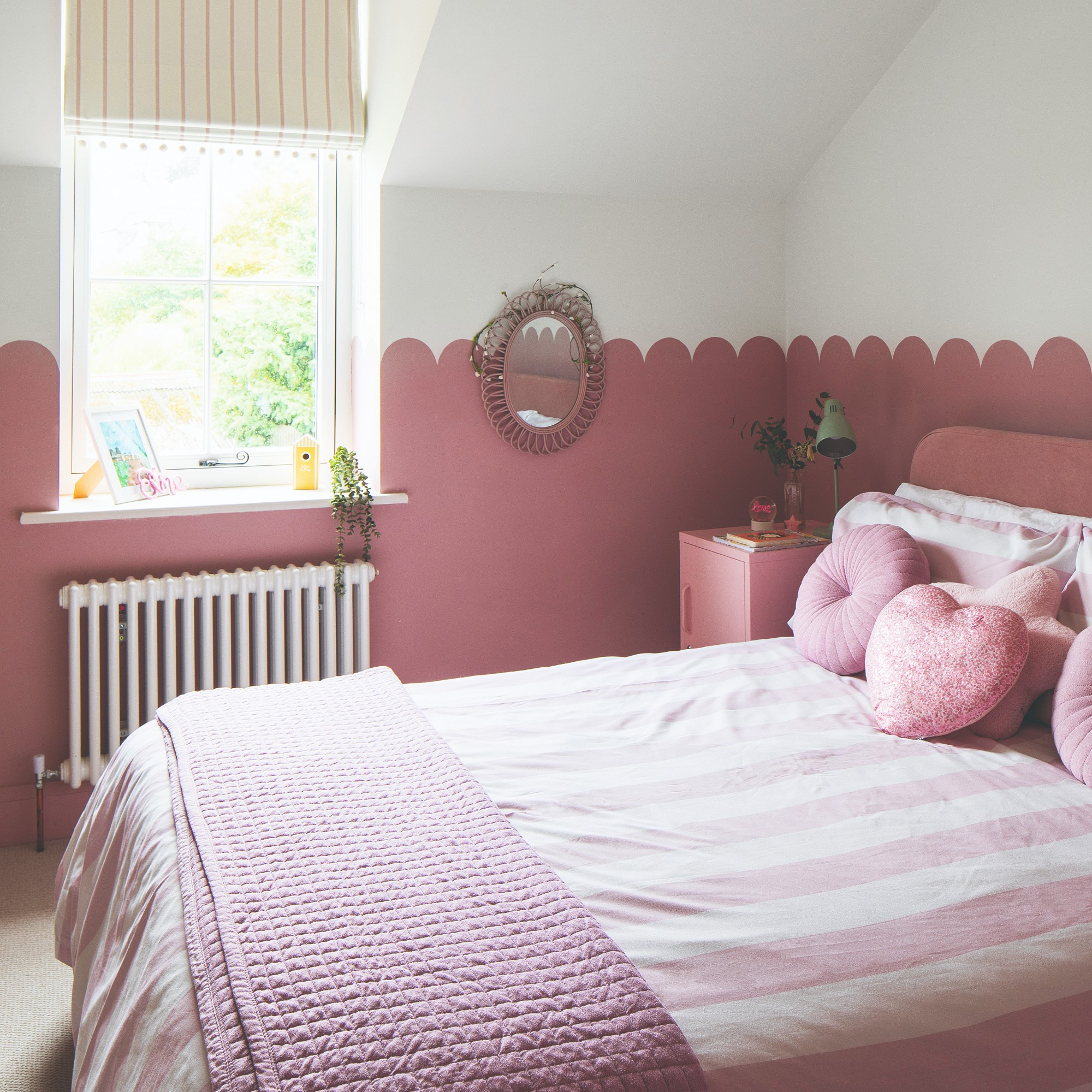
Go the extra mile and use a colour combination of two accents – you can choose a darker shade for the lower half of your wall and a lighter colour for the top half. If you split the proportions equally they'll both be accents.
'Adding an accent colour is a brilliant way of injecting a joyful, unexpected point of interest and a touch of personality to a room, and there are many different ways to embrace this approach within an interior,' says Ruth Mottershead, creative director at Little Greene.
One option is to use the same colour but in different tonal shades – two greys for example, one mid-tone and one lighter, or two contrasting colours. Ruth adds, 'This approach can also be very effective as a contrasting two-tone combination.'
11. Prettify with ice cream pink
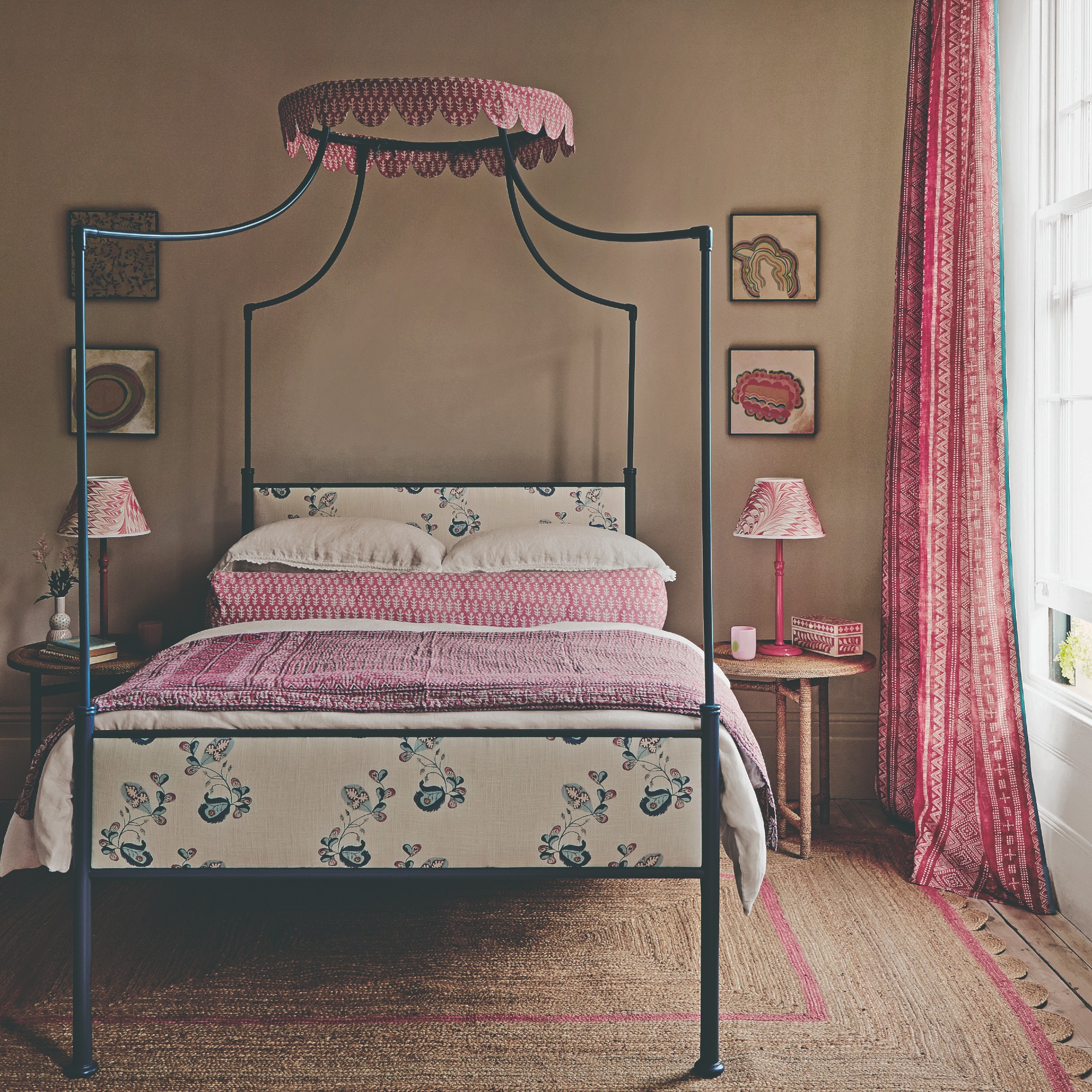
Pastel shades are so easy on the eye and create a charming feel whether it's in wallpaper form or plain painted walls.
If you are leaning into a cottage-style look with your bedroom colour scheme, then a sky blue and pale green work wonders with an ice cream pink as an accent. For a cohesive feel, make sure the colours you pick all have the same tonal quality.
12. Create a cosy feel with cobalt blue
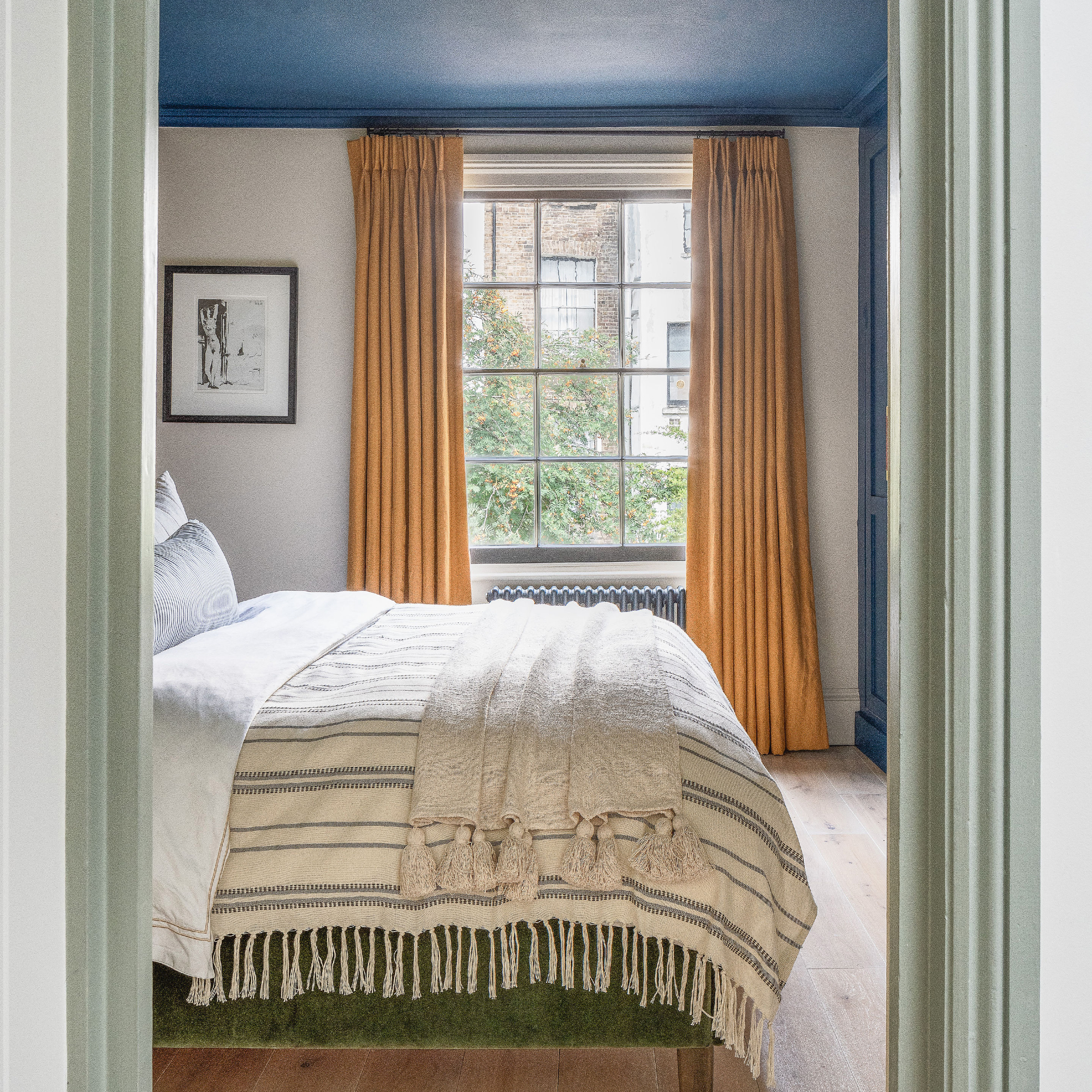
Create a soothing bedroom colour scheme with a twist by painting the ceiling and wardrobe in a beautiful cobalt blue. It's a great choice because it's perhaps one of the warmest shades of blue there is.
Team it with turmeric-coloured curtains and off-white walls for balance. Painted ceilings work well in any room as long as you don't have a low ceiling this is because a darker colour will bring the ceiling down visually, if you want to create the illusion of height pick a lighter shade that has a hint of colour instead.
FAQs
Should accent colours be lighter or darker?
Whether you should go for a light or dark accent colour really does depend on what kind of look you're after, as well as what your main and secondary colours in your scheme are.
'They’re usually darker, but not always. A darker accent gives weight and presence, like a full stop in a sentence. But if your main palette is deep, a lighter accent can offer a sense of lift or lightness. It’s really about contrast and visual rhythm. Sometimes the lighter note cuts through, and other times the darker one anchors the room,' Jen Devaney, Frenchic Paint’s colour consultant explains.
What is a complementary accent colour?
A complementary accent colour is confusingly named, a complementary colour scheme means using colours that contrast with each other. So a complementary accent colour will sit on the opposite side of the colour wheel.
'A complementary accent colour refers to a hue that sits opposite to the dominant colour on the colour wheel. These pairings are thought to naturally harmonise while creating an interesting contrast in an interior scheme,' says Debbie Leigh, design manager at ILIV.
'Typically, these are the colours opposite each other on the colour wheel – green and red, yellow and purple, orange and blue, green and pink. Playing with the hues and vibrance of the colours can create a striking colour palette that boasts character and fuses seamlessly with an existing design scheme,' says Bailey Oates, colour expert at Earthborn.
Add some flair and character to your colour scheme with one of these accent colours.

Sophie has been an interior stylist and journalist for over 25 years and has worked for many of the main interior magazines during that time, both in-house and as a freelancer. On the side, as well as being the News Editor for indie magazine, 91, she trained to be a florist in 2019 and launched Flowers Inside My Head, a bespoke floral design studio where she curates beautiful flowers for modern weddings and events.
- Sara HesikovaContent Editor
You must confirm your public display name before commenting
Please logout and then login again, you will then be prompted to enter your display name.
-
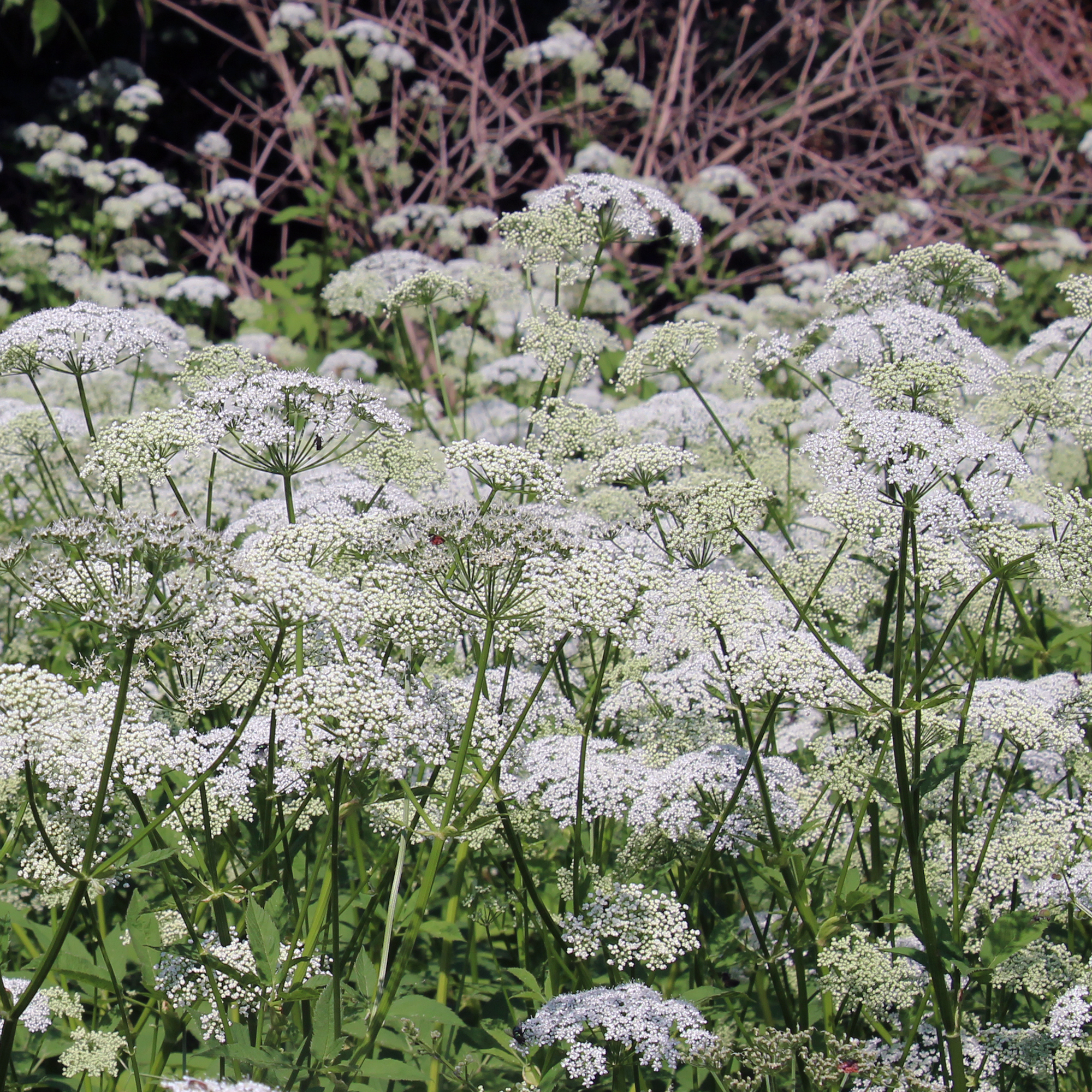 Should you get rid of ground elder? What the RHS's chief horticulturalist says about keeping or removing this weed in your garden
Should you get rid of ground elder? What the RHS's chief horticulturalist says about keeping or removing this weed in your gardenTo weed, or not to weed? We got the advice from experts
-
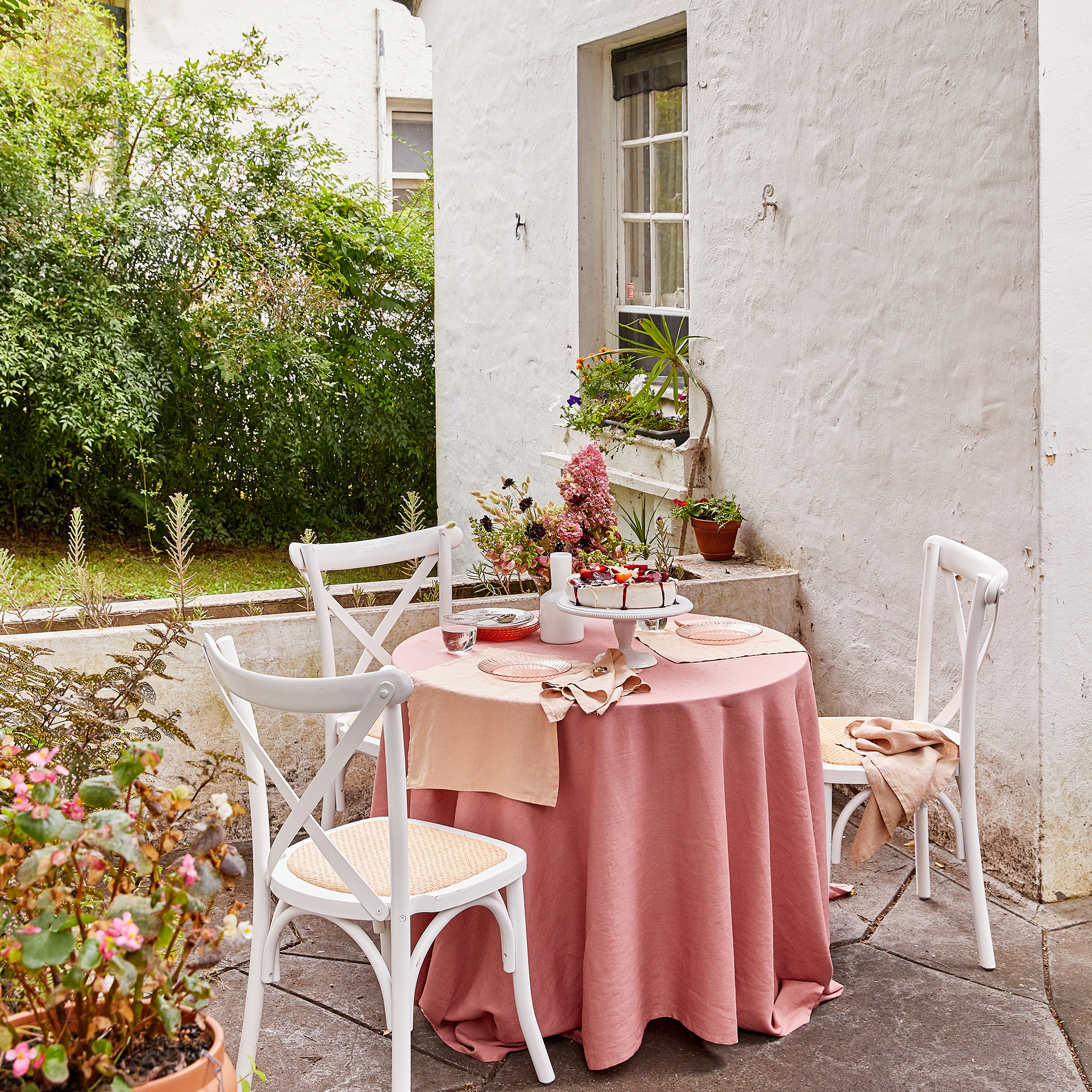 I can't get enough of café gardens this summer – here's how you can recreate the trend in your home
I can't get enough of café gardens this summer – here's how you can recreate the trend in your homeBring your favourite coffee shop to your garden
-
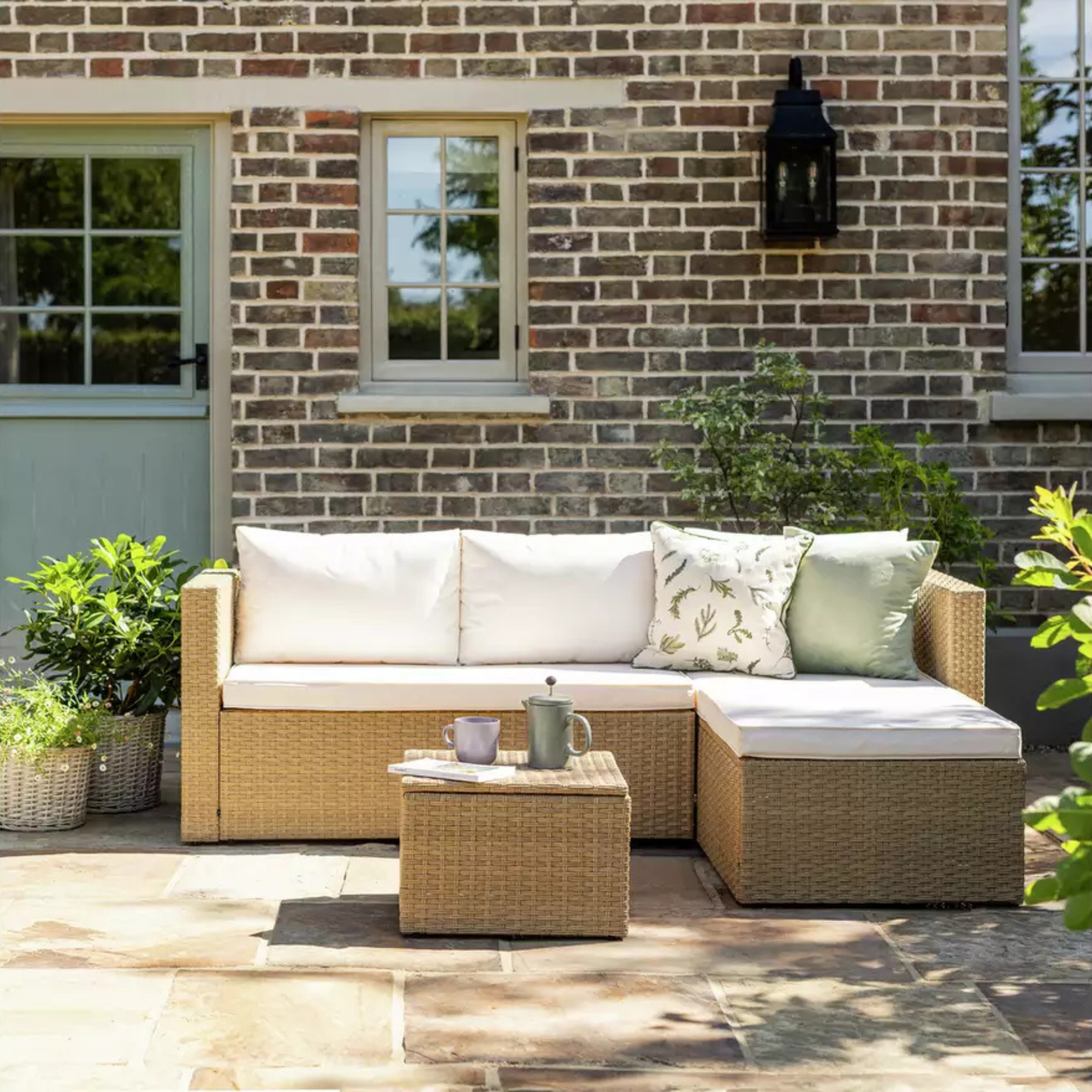 Argos Home’s rattan outdoor sofa set is one of the cheapest I’ve seen - and it has thousands of reviews singing its praises
Argos Home’s rattan outdoor sofa set is one of the cheapest I’ve seen - and it has thousands of reviews singing its praisesThe happy customers say it's good value for money, comfortable and stylish
-
 4 things shoppers say they wish they knew before buying the Ninja Luxe Café and after testing it, I can only agree
4 things shoppers say they wish they knew before buying the Ninja Luxe Café and after testing it, I can only agreeFrom cleaning to the new version
-
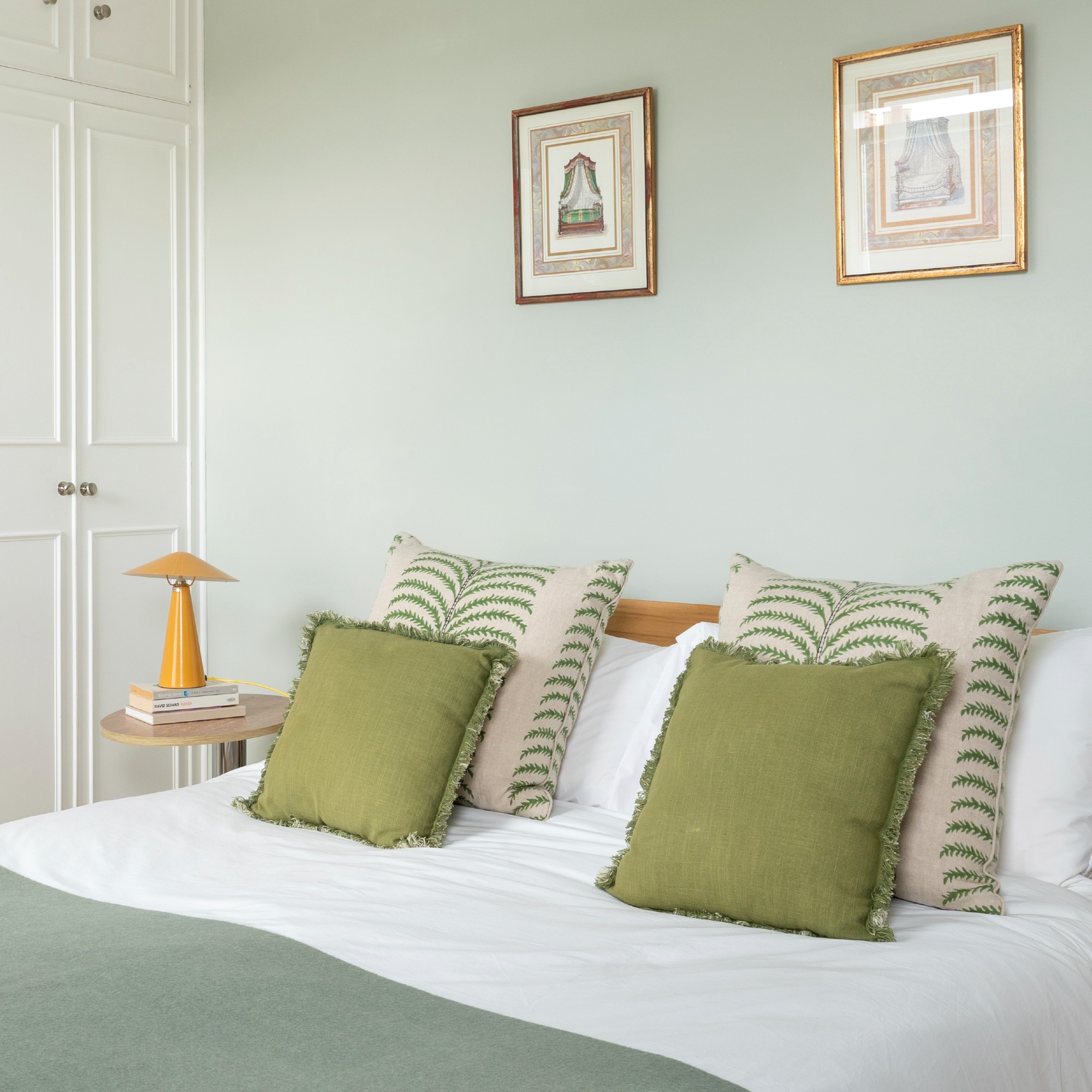 I have no space for any more table lamps in my home, but these 6 designer-look H&M ones are tempting me right now
I have no space for any more table lamps in my home, but these 6 designer-look H&M ones are tempting me right nowThey're too good to resist
-
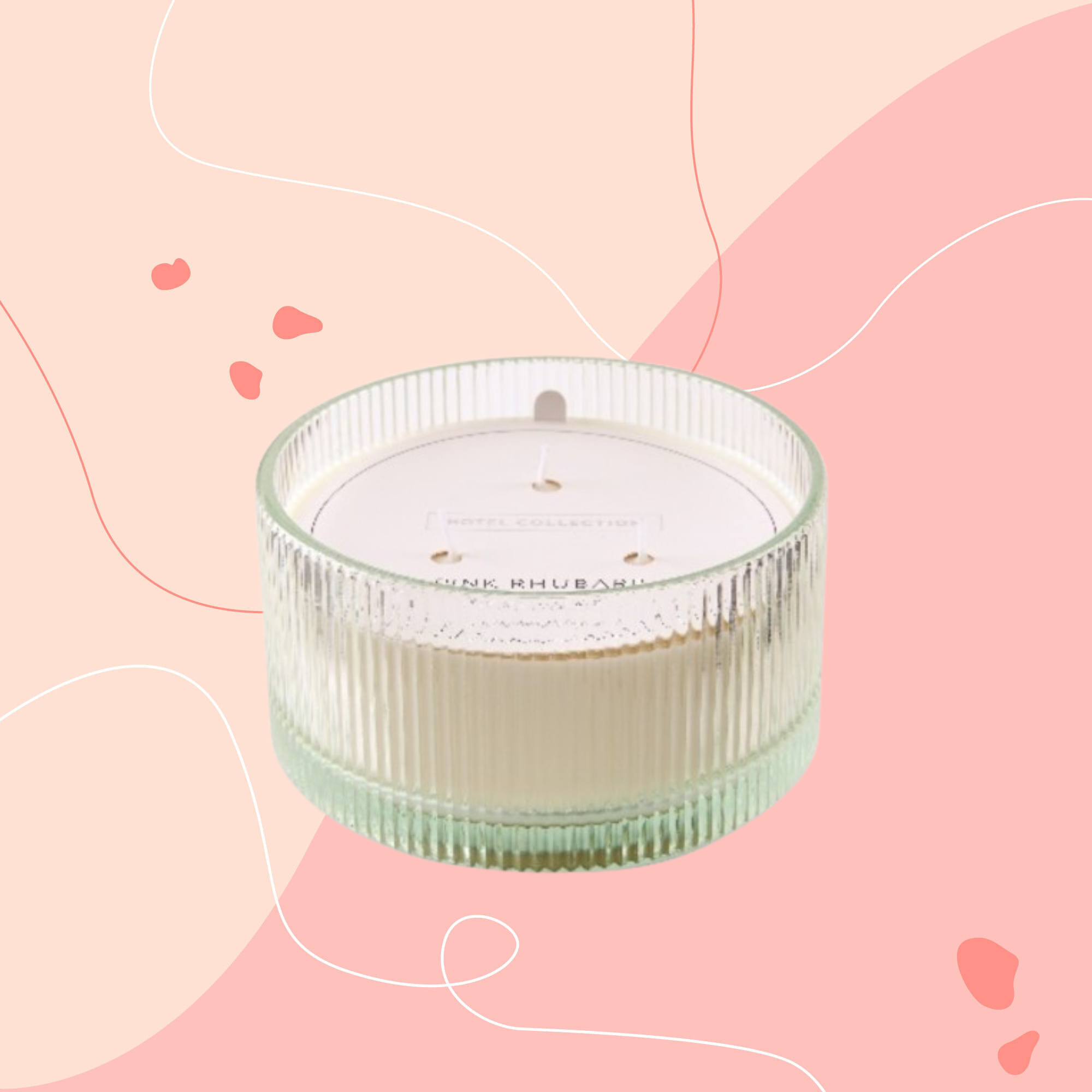 Aldi’s new hurricane candle is a dead ringer for The White Company's iconic Flowers scent – it’s only £10 too
Aldi’s new hurricane candle is a dead ringer for The White Company's iconic Flowers scent – it’s only £10 tooBut here's why I think you should stick with The White Company
-
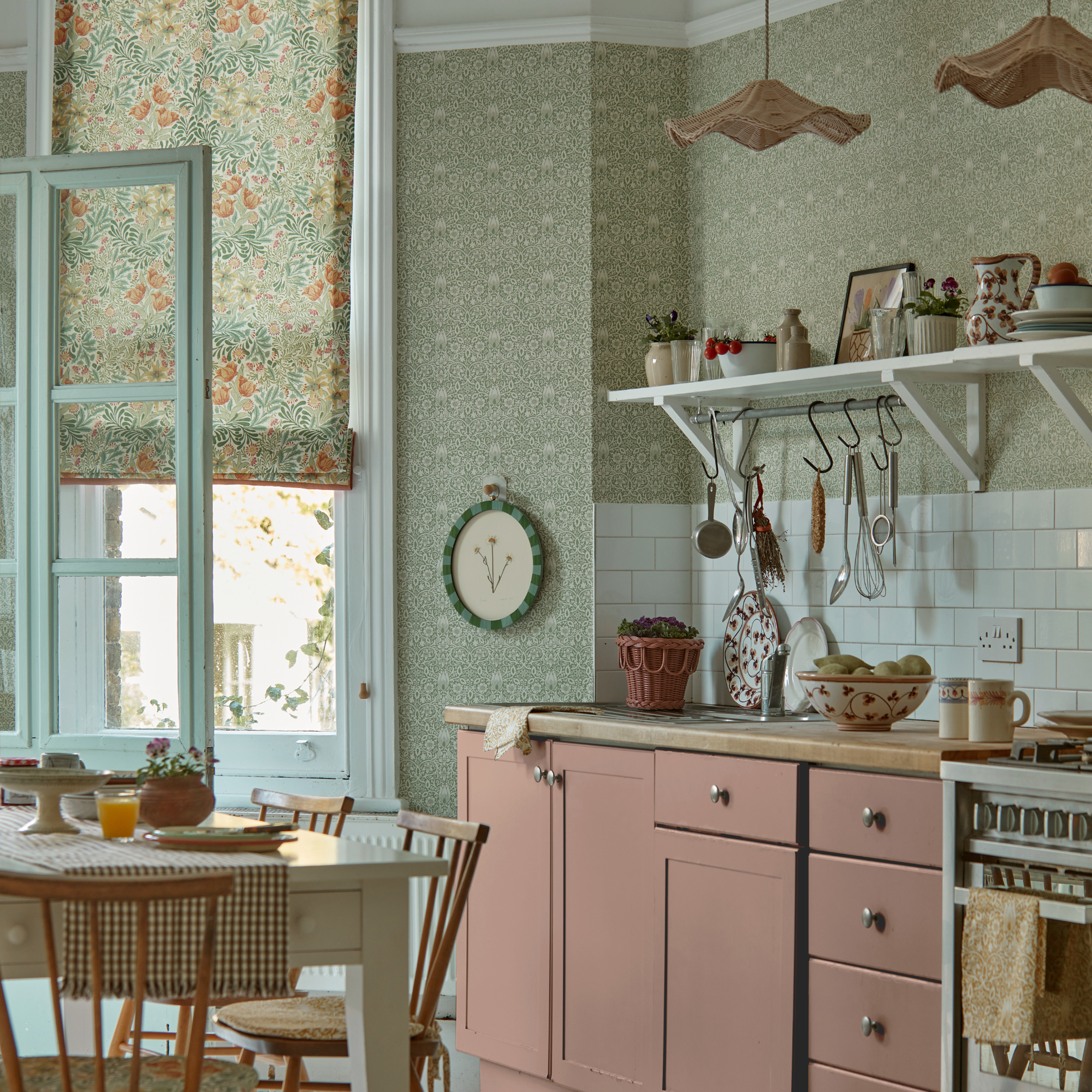 William Morris prints are everywhere this year - this is how to use these timeless patterns to give your kitchen a fresh and modern look
William Morris prints are everywhere this year - this is how to use these timeless patterns to give your kitchen a fresh and modern lookWe can't get enough of these classic prints in our homes
-
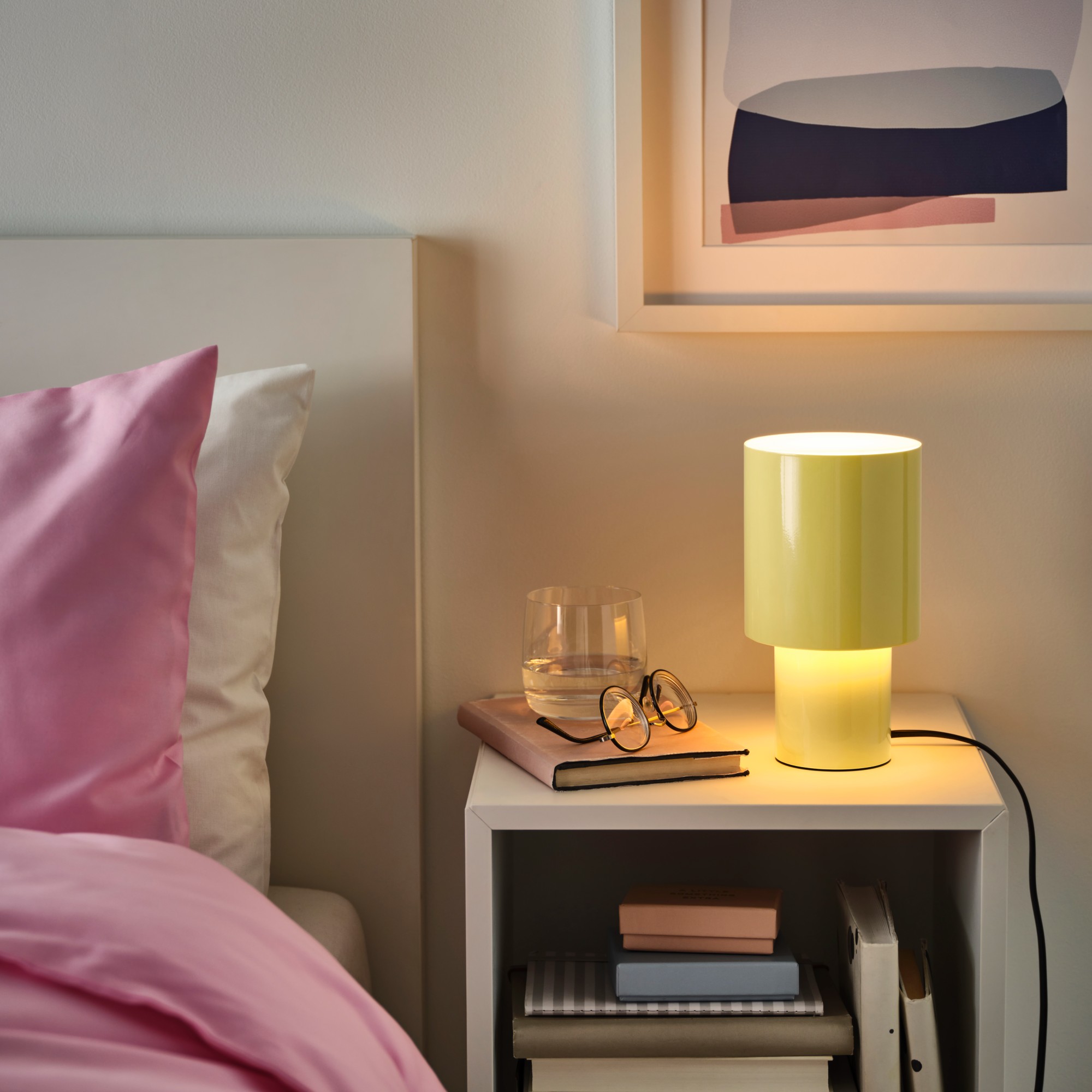 IKEA’s new but already viral lamp is only £8 – and it comes in the most on-trend colour of the year
IKEA’s new but already viral lamp is only £8 – and it comes in the most on-trend colour of the yearI can’t believe I’ve been sleeping on this trending butter yellow IKEA lamp up until now!
-
 Next Home’s new lighting range left me seriously impressed when I saw them IRL – these are the designer-look lamps to add to your shopping cart
Next Home’s new lighting range left me seriously impressed when I saw them IRL – these are the designer-look lamps to add to your shopping cartI was left seriously impressed by these stunning lamps
-
 'Picky bits' tableware is the underrated summer trend I'm obsessed with – these are the best pieces from Habitat, John Lewis & Dunelm
'Picky bits' tableware is the underrated summer trend I'm obsessed with – these are the best pieces from Habitat, John Lewis & DunelmAlfresco dining is about to get a serious upgrade
-
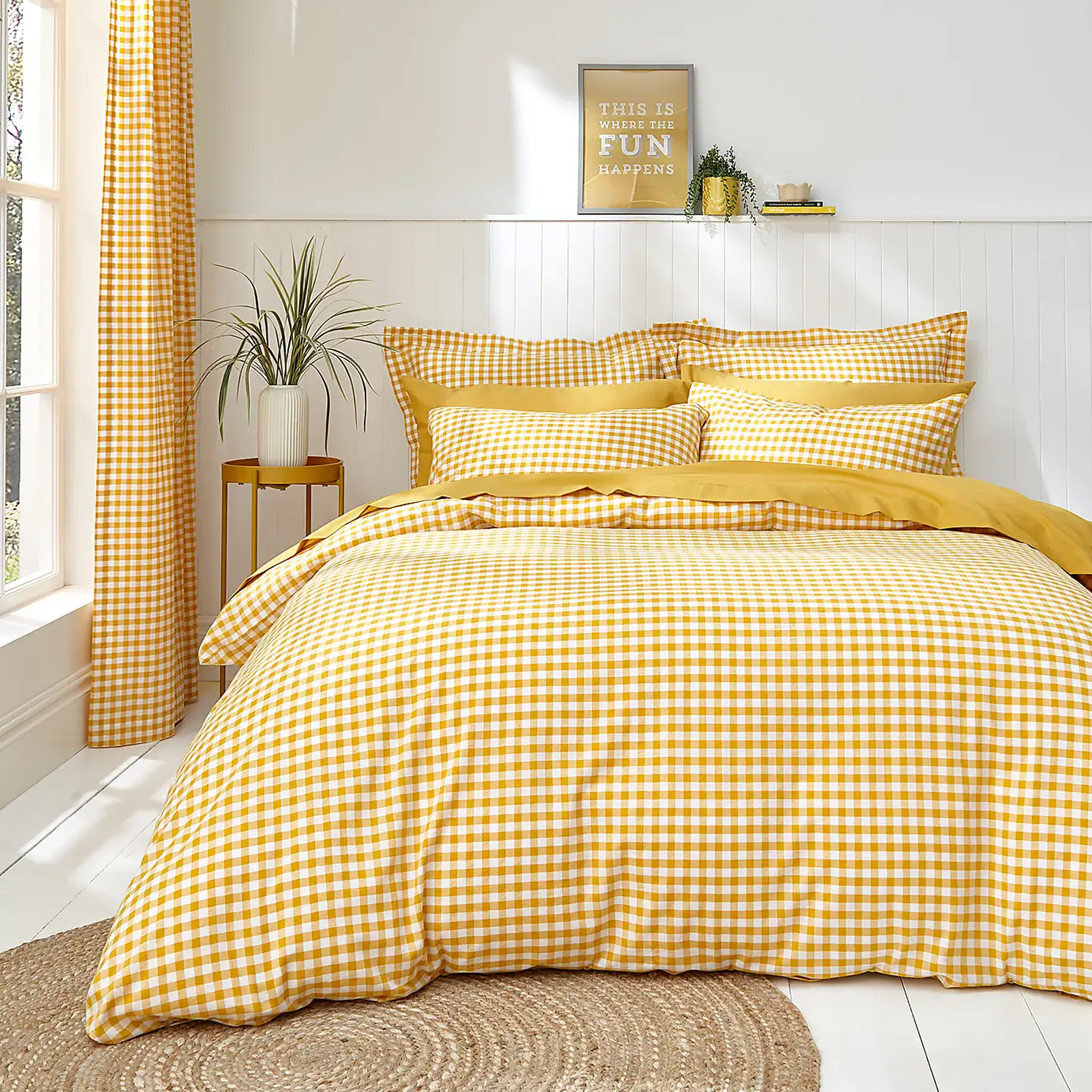 'I'm tempted to buy another one' – this gingham bedding set from Dunelm is so good that shoppers are buying it twice, and it's only £30
'I'm tempted to buy another one' – this gingham bedding set from Dunelm is so good that shoppers are buying it twice, and it's only £30It's only £30
